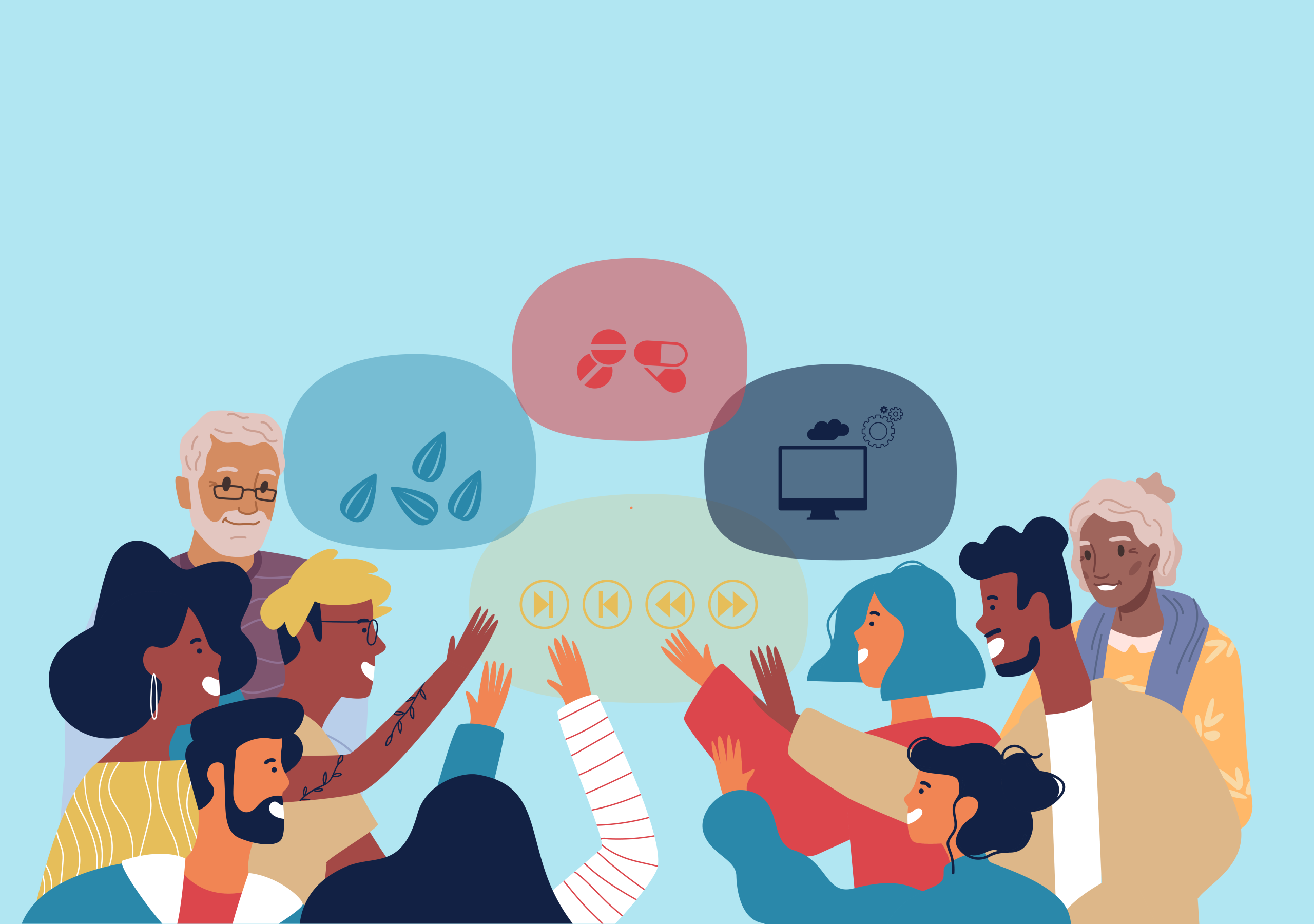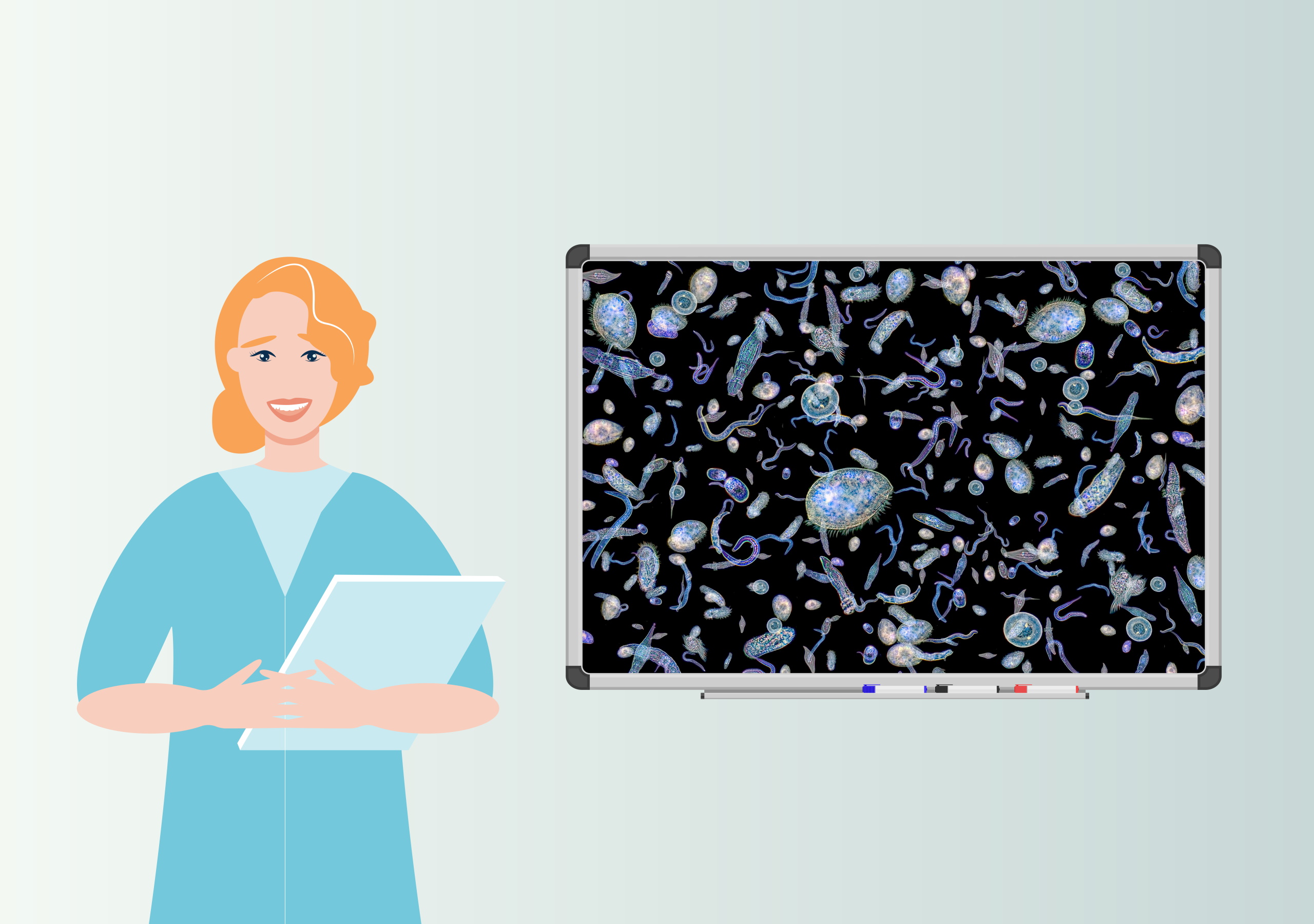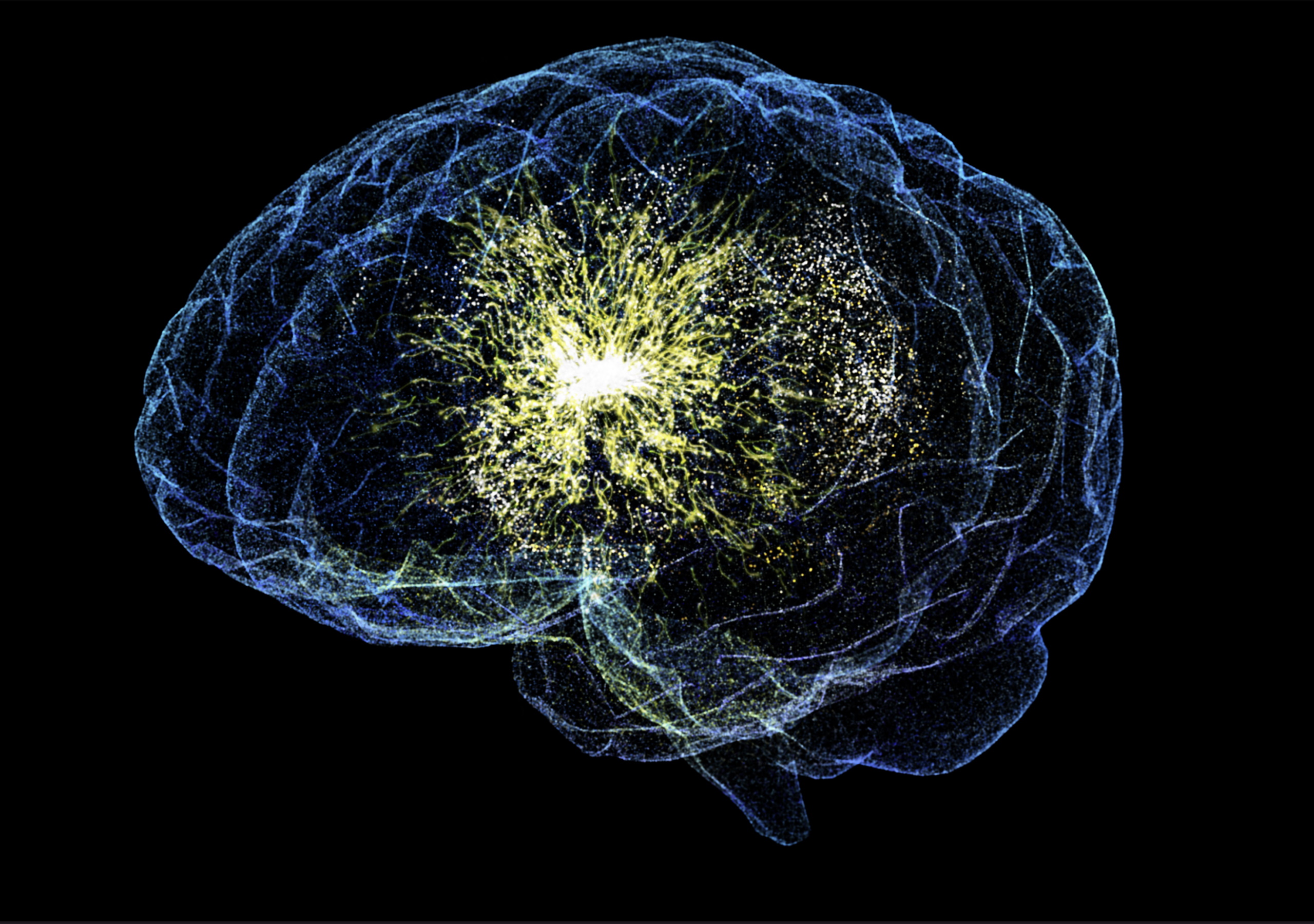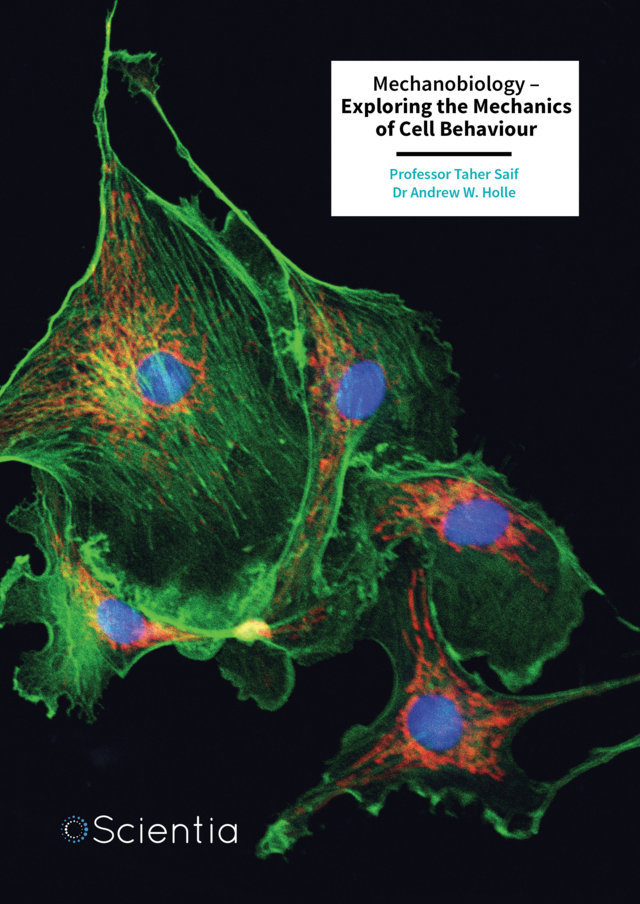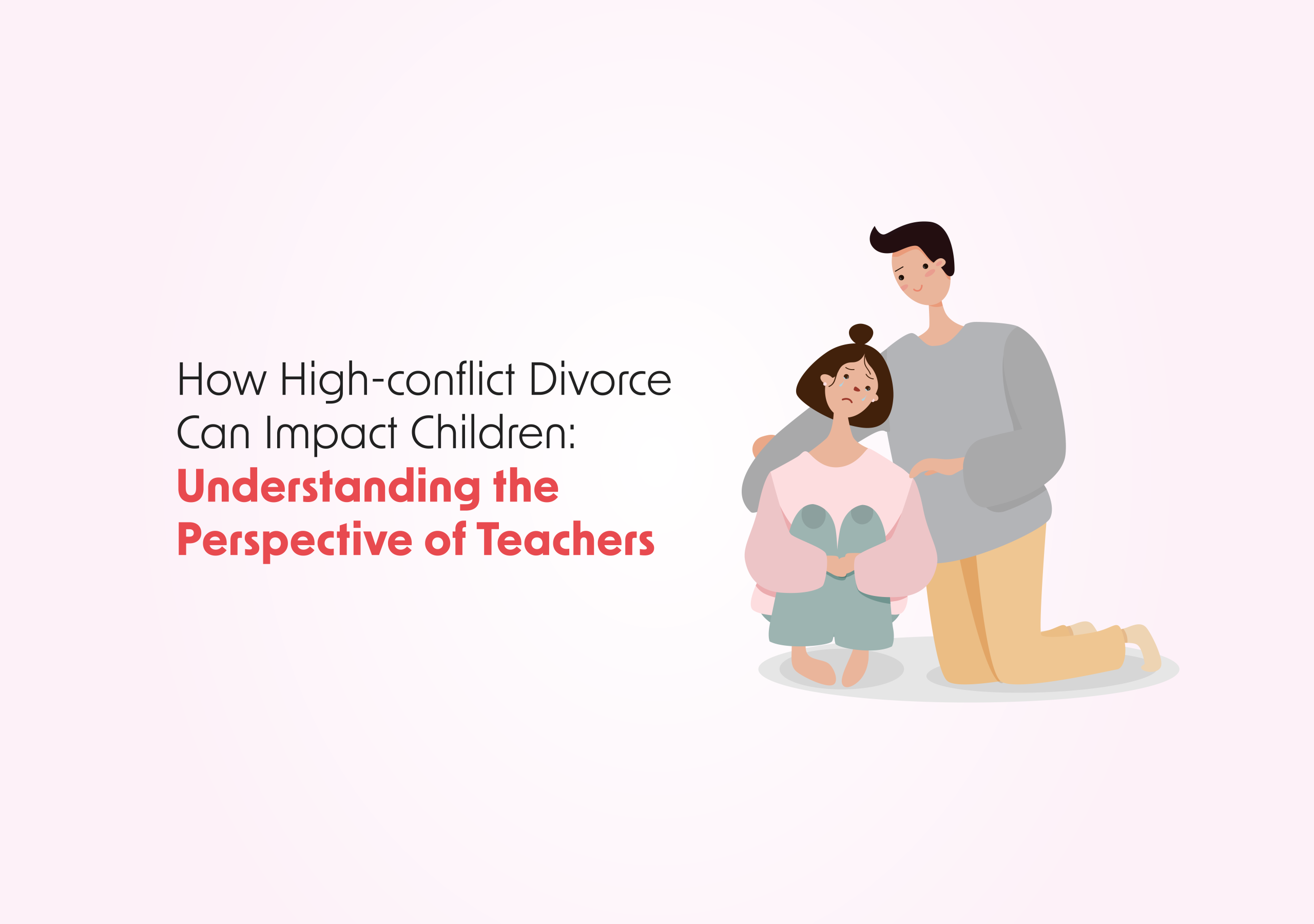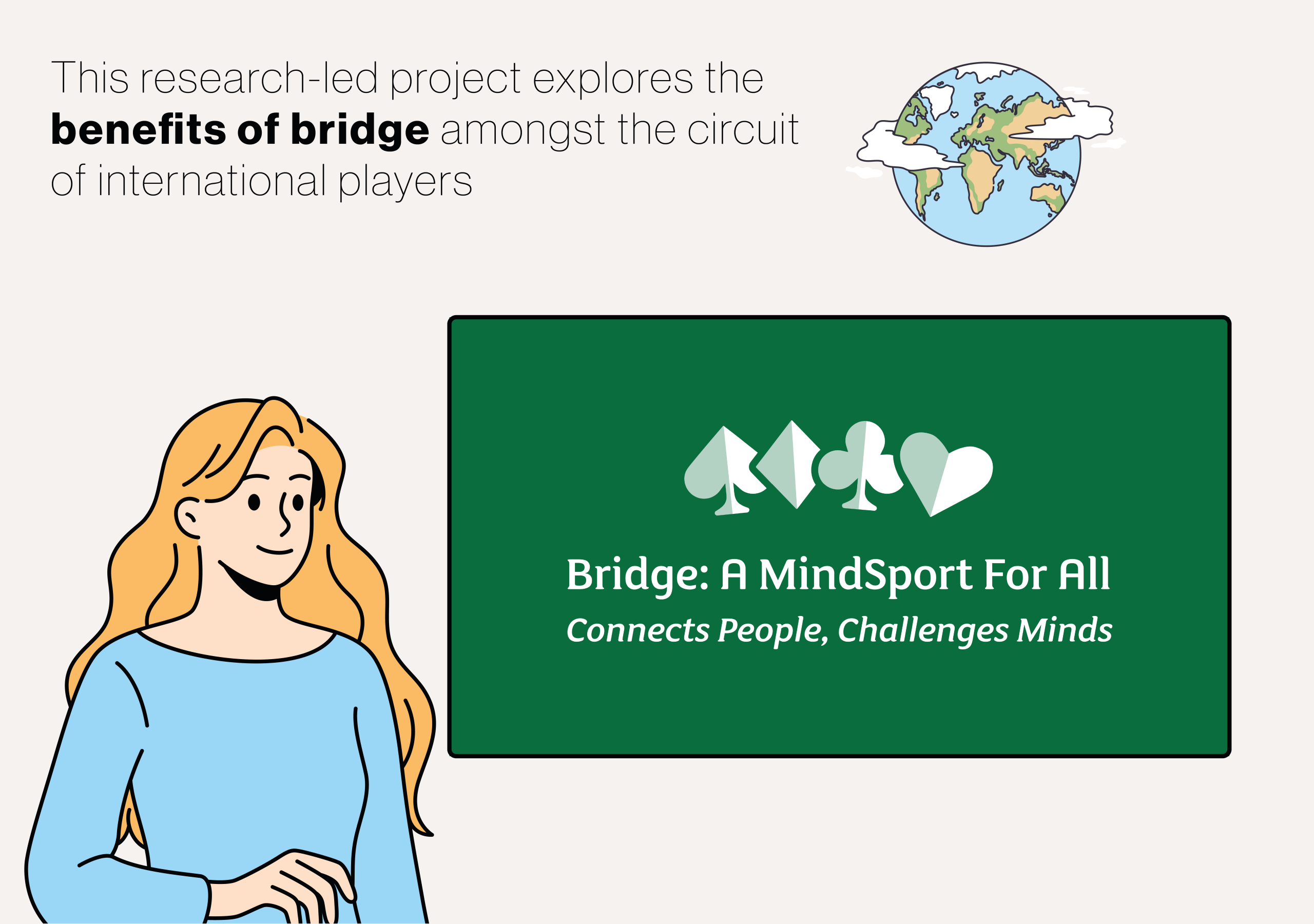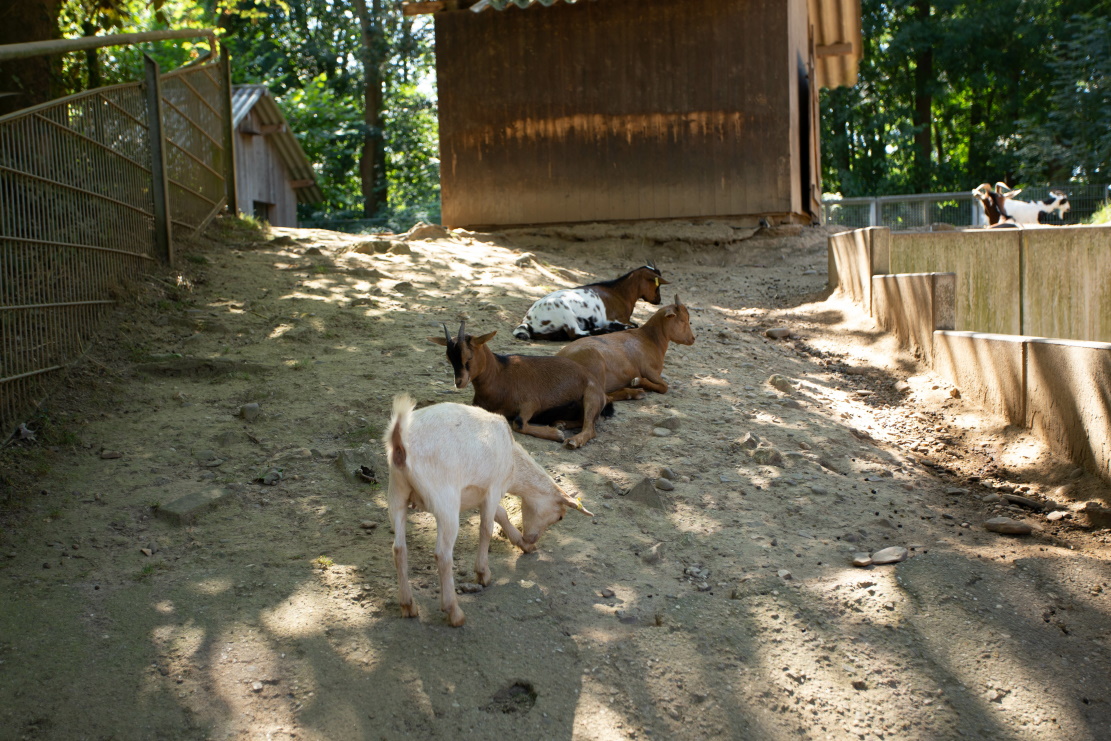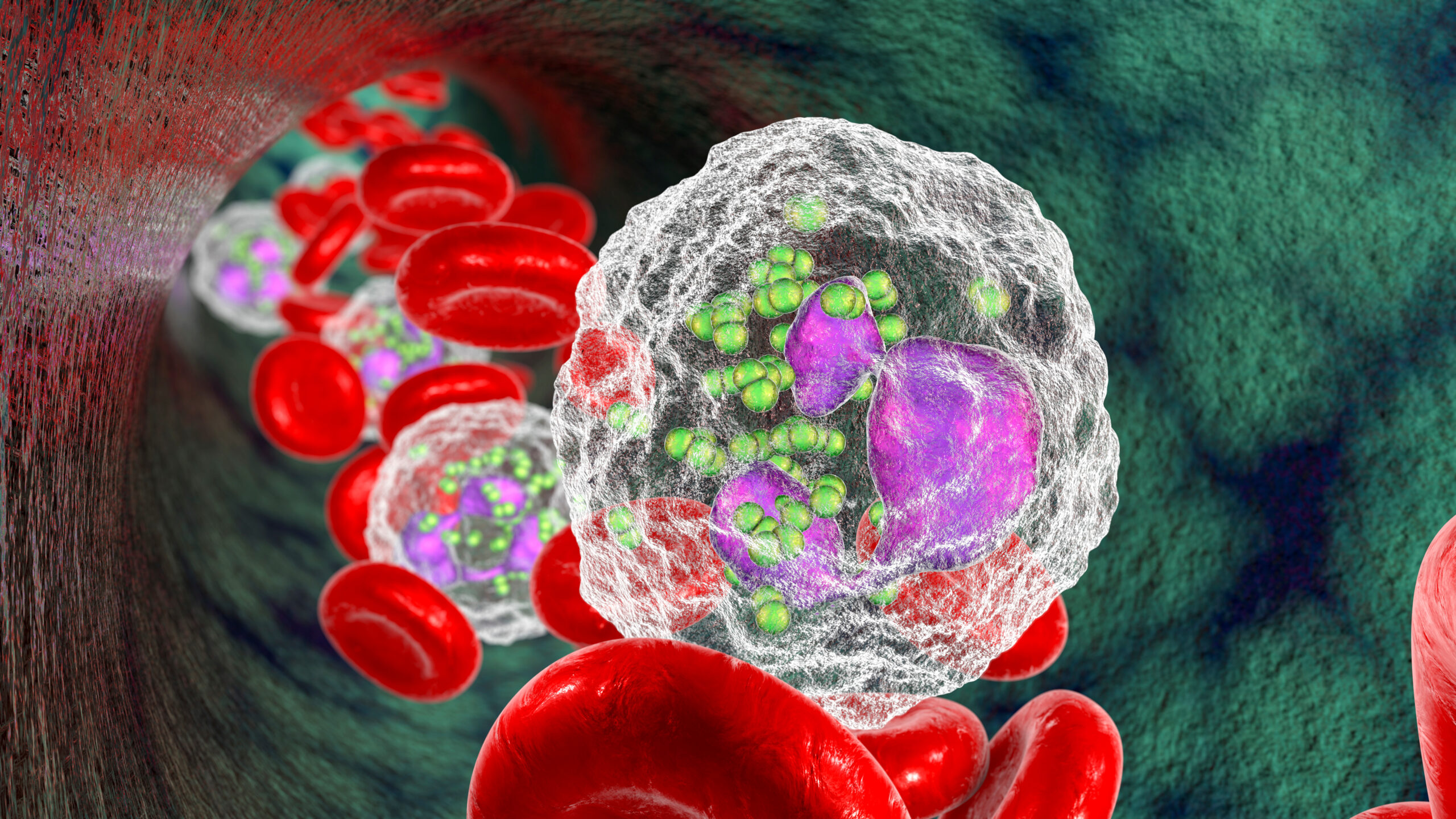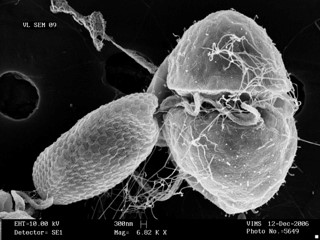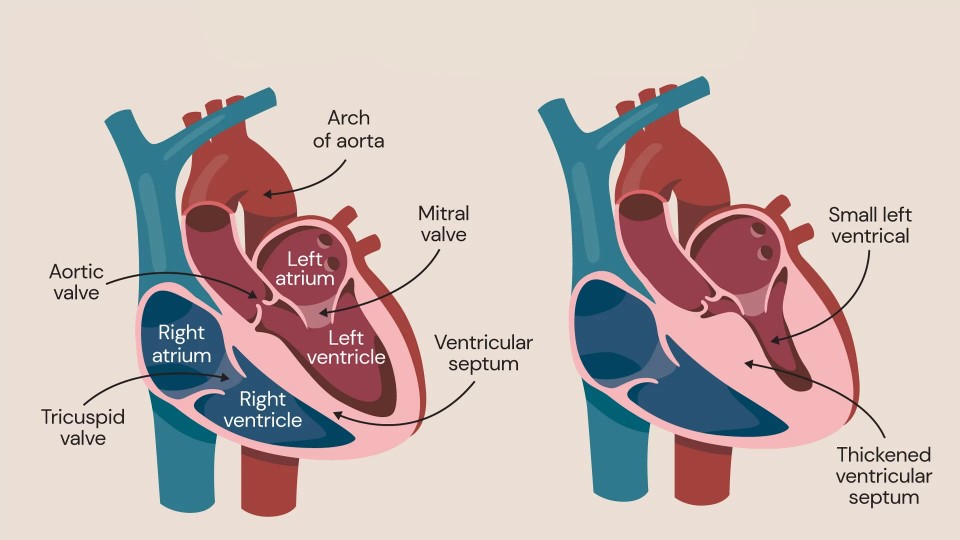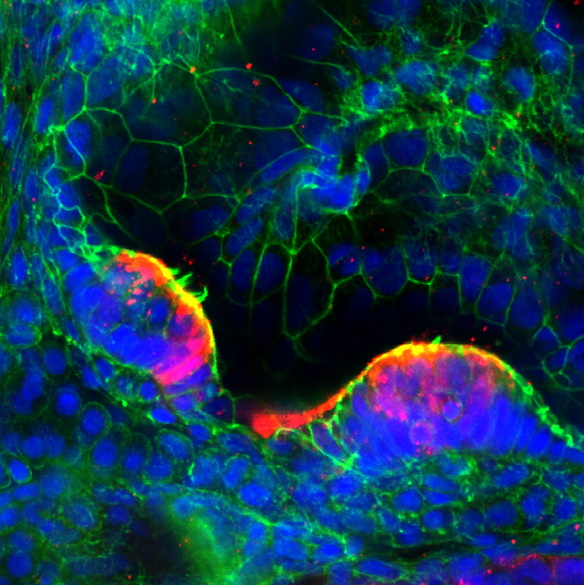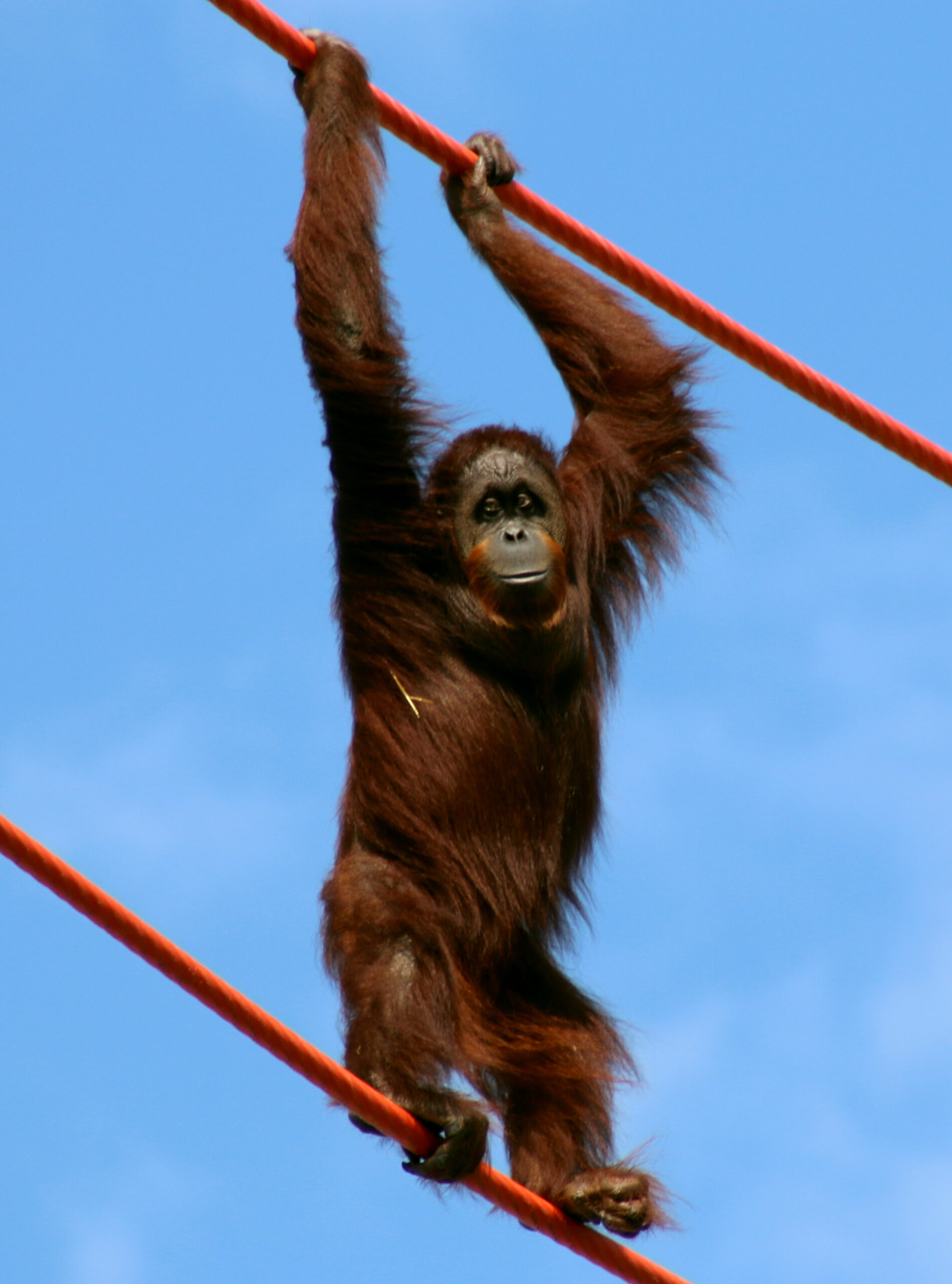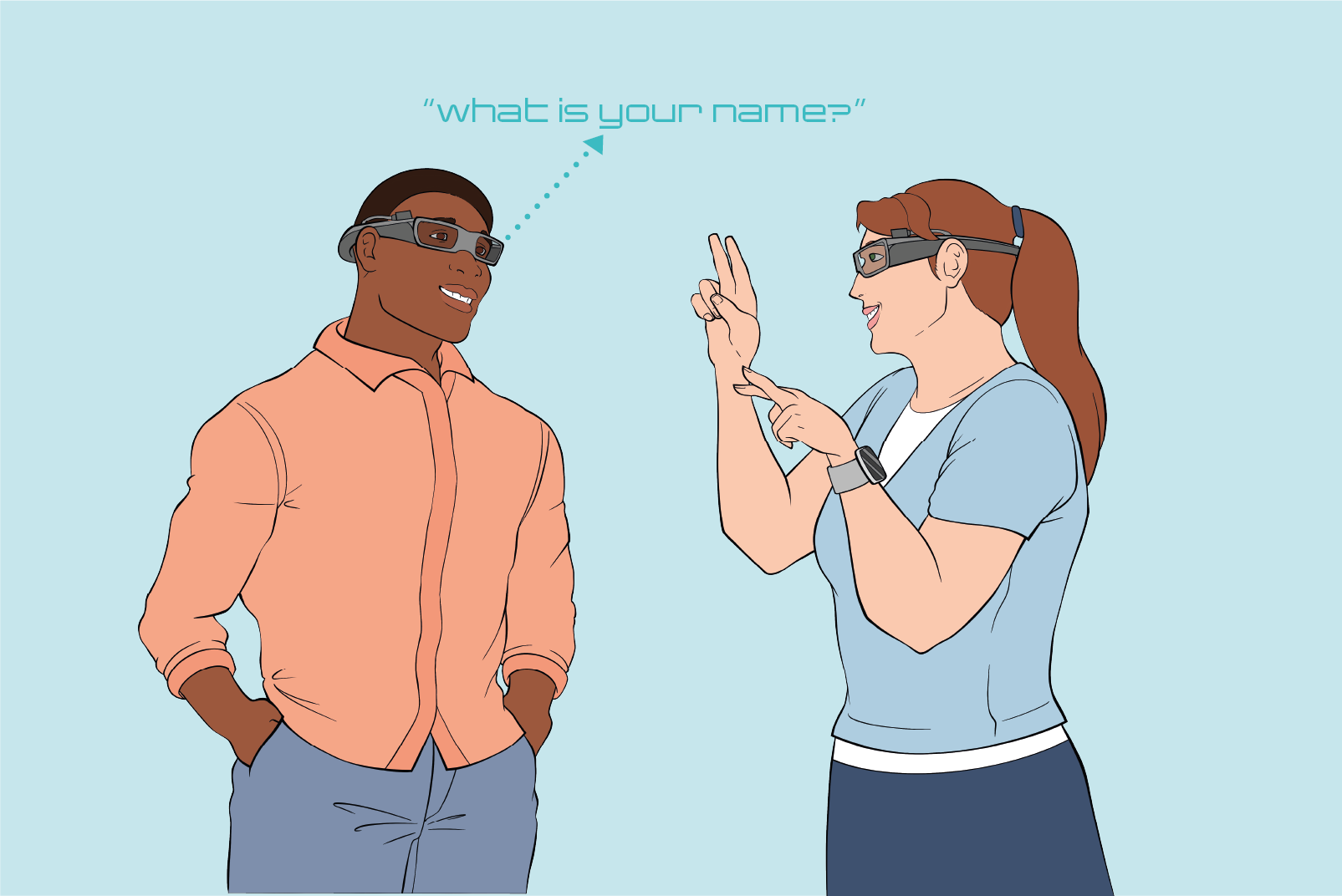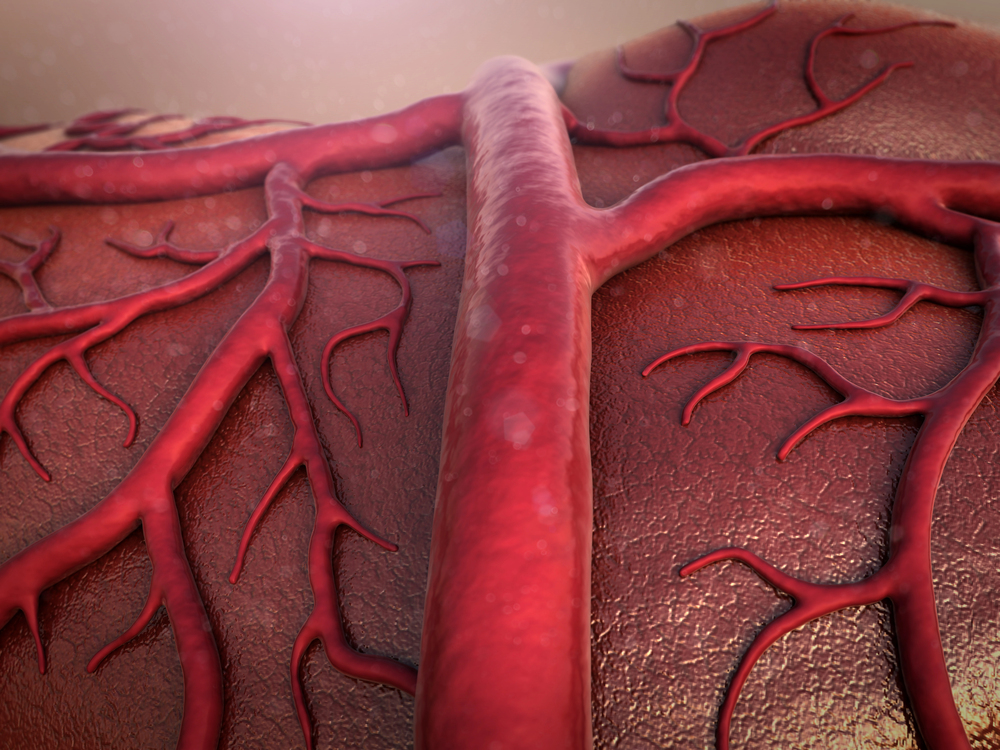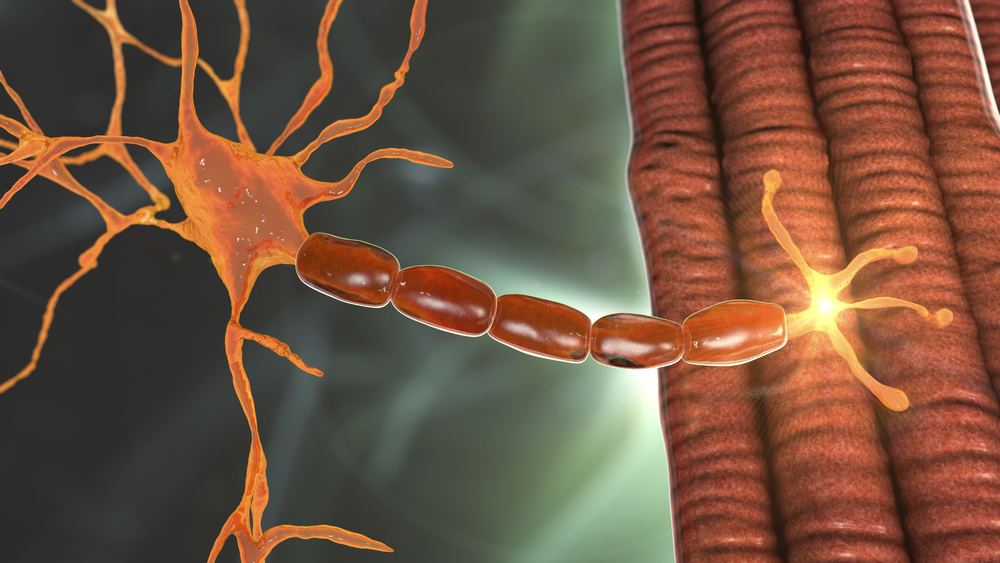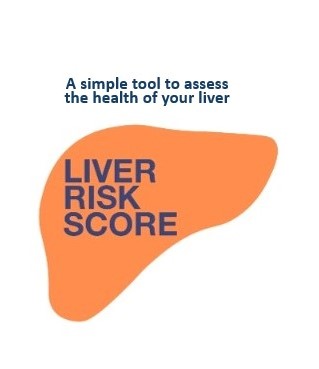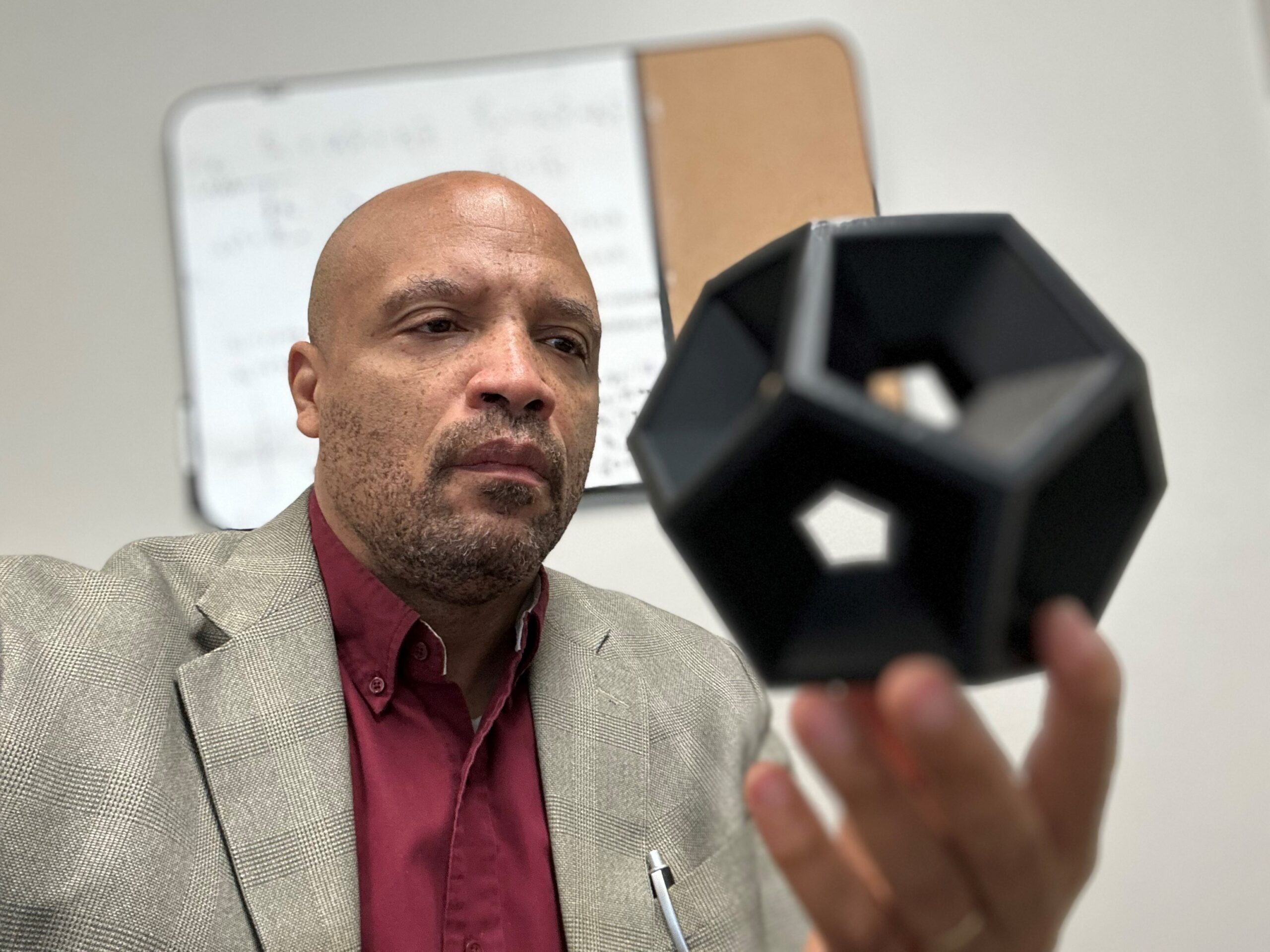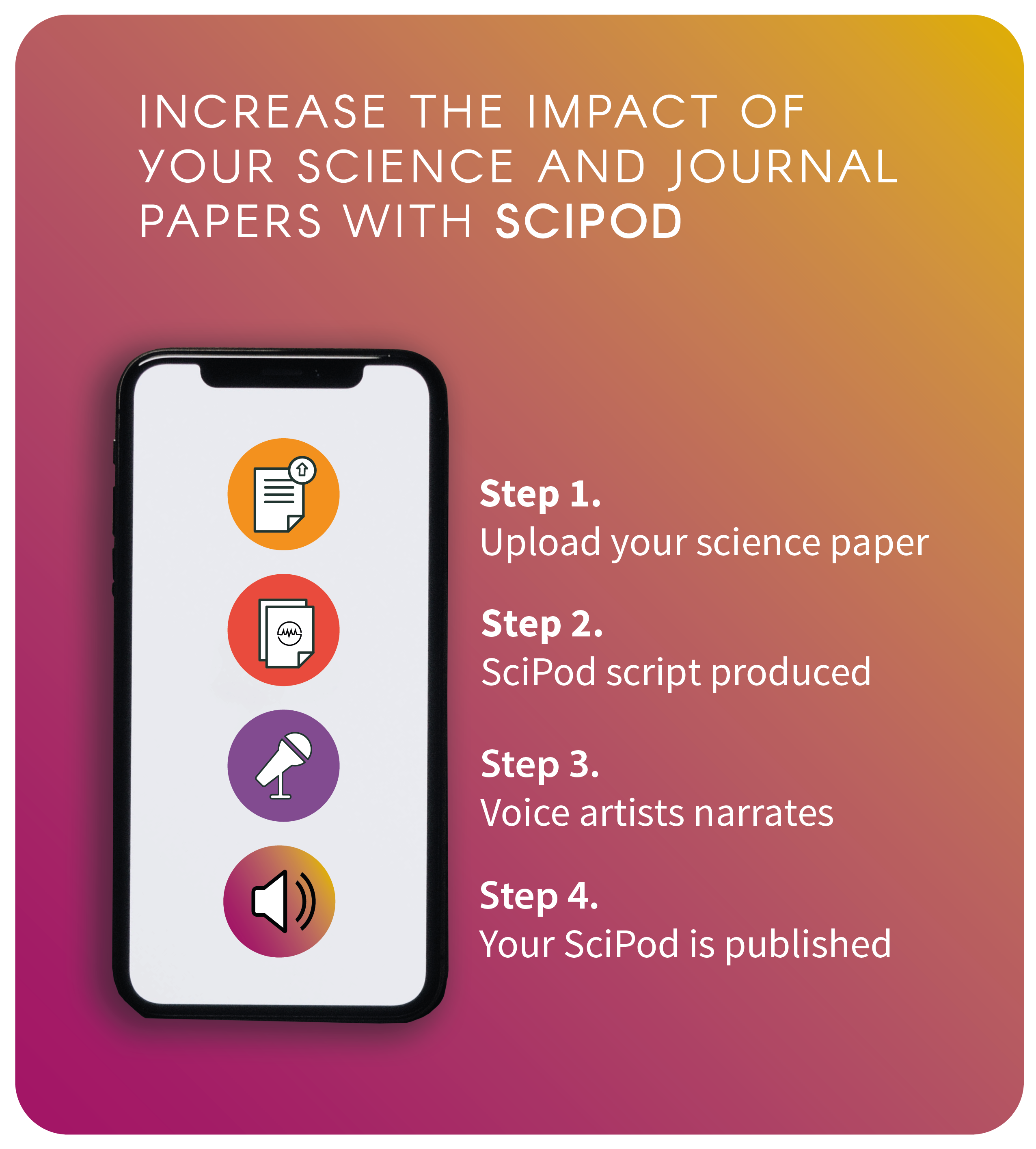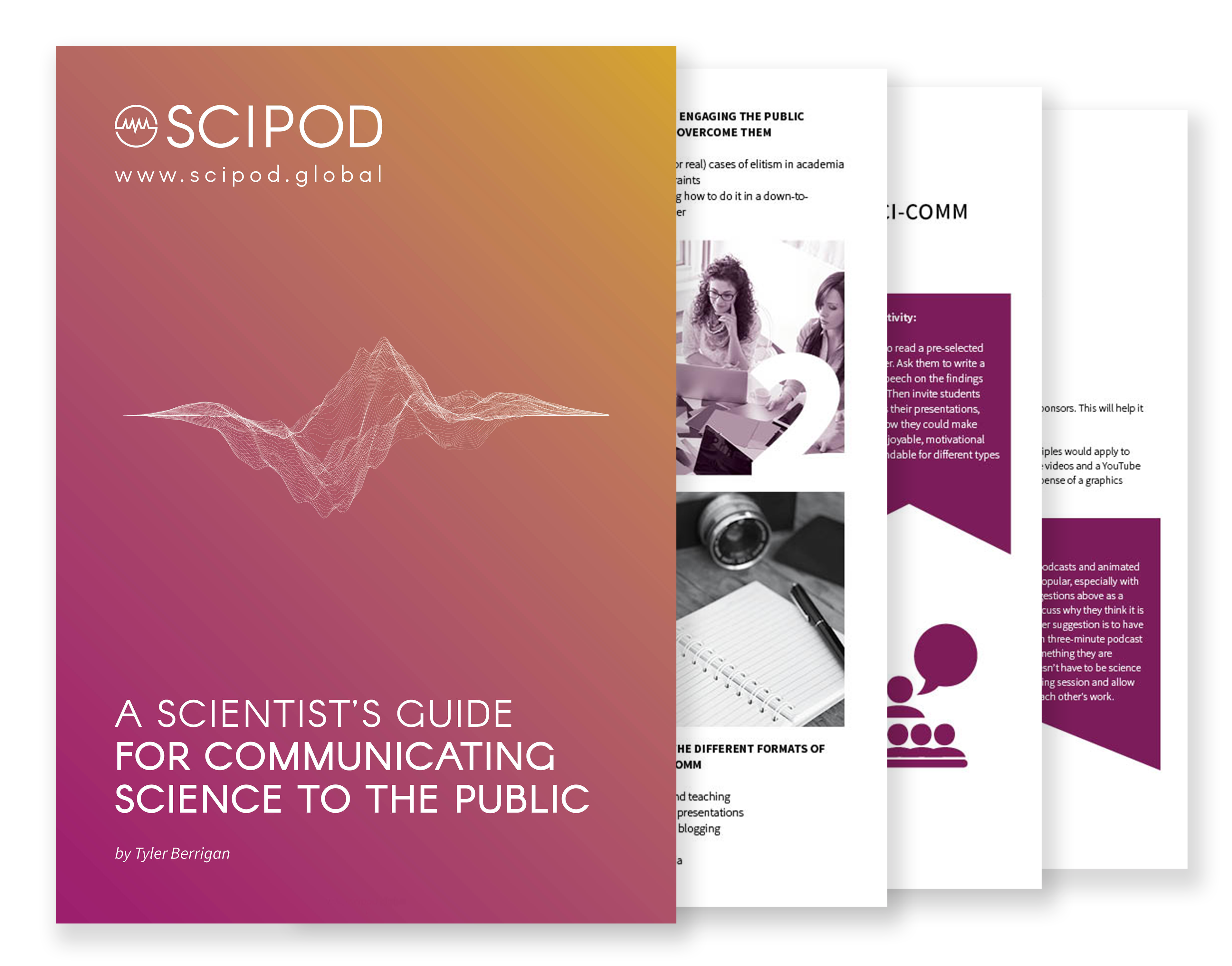Welcome to SciComm Radio
An exclusive interview series with leading scientists and science communicators

Click Below To Listen To A SciPod Radio Episode
Dr. Anne Hultgren | Do dual-anonymous reviews reduce university bias in research funding?
Audiobook
About this episode
Research by Dr. Anne Hultgren and colleagues at the Arnold and Mabel Beckman Foundation demonstrates that blinding reviewers to applicants’ institutional affiliations (also known as dual-anonymous reviews) leads to more equitable distribution of research funding opportunities. Their study reveals how removing identifying information helps overcome unconscious biases toward prestigious universities in grant review processes. More
Original Article Reference
This SciPod is a summary of the paper ‘Blinding reduces institutional prestige bias during initial review of applications for a young investigator award’ published in eLife, https://doi.org/10.7554/eLife.92339
Contact
For further information, you can connect with the Arnold and Mabel Beckman Foundation at PR@beckman-foundation.org
This work is licensed under a Creative Commons Attribution 4.0 International License. 
What does this mean?
Share: You can copy and redistribute the material in any medium or format
Adapt: You can change, and build upon the material for any purpose, even commercially.
Credit: You must give appropriate credit, provide a link to the license, and indicate if changes were made.
Increase The Impact Of Your Research!
More episodes
Caroline Kingdon | From Stigma to Support: A New Approach to ME/CFS Treatment in the UK
Audiobook
About this episode
Imagine living with an illness that can sap your energy levels so completely that even day-to-day tasks, such as doing laundry, walking the dog, or even getting out of bed can be insurmountable challenges. To make matters worse, this illness is not well understood either by the public or by medical staff, and is often dismissed and stigmatised, making it difficult to find understanding or treatment. This is the unfortunate lived experience of many people with myalgic encephalomyelitis/chronic fatigue syndrome (or ME/CFS for short). In a recent Communication article, researcher Caroline Kingdon of the London School of Hygiene and Tropical Medicine, and colleagues, discuss this misunderstood condition through the prism of the 2021 guideline for the treatment of those with ME/CFS, which have been published by the UK’s National Institute for Health and Care Excellence (or NICE for short). Their article aims to inform primary caregivers about the NICE guideline, and, happily, reveals that the new guideline prioritises an overdue shift toward compassionate and patient-focused care for ME/CFS. More
Original Article Reference
This Audio is a summary of the paper ‘What Primary Care Practitioners Need to Know about the New NICE Guideline for Myalgic Encephalomyelitis/Chronic Fatigue Syndrome in Adults’, in Healthcare, https://doi.org/10.3390/healthcare10122438
Contact
For further information, you can connect with Caroline Kingdon at caroline.kingdon@lshtm.ac.uk
This work is licensed under a Creative Commons Attribution 4.0 International License. 
What does this mean?
Share: You can copy and redistribute the material in any medium or format
Adapt: You can change, and build upon the material for any purpose, even commercially.
Credit: You must give appropriate credit, provide a link to the license, and indicate if changes were made.
Increase The Impact Of Your Research!
More episodes
Dr. Adeniyi Charles Adeola | The Genetic Blueprint of Nigerian Animals: How Genetics Research is Transforming Nigerian Wildlife and Farming
Audiobook
About this episode
Across the varied and diverse landscapes that make up the Nigerian countryside, animals, both wild and domesticated, are more than merely an agricultural commodity or source of food; they are an integral part of local cultures, natural biodiversity, and represent an ecological treasure trove. Local wildlife and agricultural livestock help to sustain the livelihoods of millions. However, beyond this, Nigerian animals hold secrets within their genetic code that could, when revealed, help to prevent diseases, aid conservation efforts and enhance agricultural productivity. Leading the efforts to uncover useful and interesting genetic phenomena in these animals is Dr. Adeniyi Charles Adeola of the Chinese Academy of Sciences, who explores the genetic blueprints of Nigerian animals in his pioneering research. From investigating the population dynamics of grasscutters to tackling the genetic roots of prion diseases, Dr. Adeniyi Charles Adeola’s work illuminates both challenges and solutions that impact food security, agriculture, and biodiversity in Nigeria, and far beyond. More
Original Article Reference
This Audio is a summary of the papers ‘Population structure and evolutionary history of the greater cane rat (Thryonomys swinderianus) from the Guinean Forests of West Africa’, in Frontiers in Genetics, https://doi.org/10.3389/fgene.2023.1041103, ‘Single nucleotide polymorphisms (SNPs) in the open reading frame (ORF) of prion protein gene (PRNP) in Nigerian livestock species’, in BMC Genomics, https://doi.org/10.1186/s12864-024-10070-2 and ‘Polymorphism of prion protein gene (PRNP) in Nigerian sheep’, in Prion, https://doi.org/10.1080/19336896.2023.2186767
Contact
For further information, you can connect with Dr Adeniyi Charles Adeola at chadeola@mail.kiz.ac.cn
This work is licensed under a Creative Commons Attribution 4.0 International License. 
What does this mean?
Share: You can copy and redistribute the material in any medium or format
Adapt: You can change, and build upon the material for any purpose, even commercially.
Credit: You must give appropriate credit, provide a link to the license, and indicate if changes were made.
Increase The Impact Of Your Research!
More episodes
Professor Magnus S. Magnusson | The surprising similarities between the structures of human cells and societies
Audiobook
About this episode
Research by Professor Magnus S. Magnusson at the University of Iceland demonstrates surprising similarities between the organization of cellular protein networks and of human societies. He reveals how the invention of writing and, very recently, general education, transformed human civilization in ways that mirror ancient biological developments and emphasises how this makes humans unique. More
Original Article Reference
This SciPod is a summary of the paper ‘Sudden bio-mathematical self-similarity and the uniqueness of human mass societies: from T-patterns and T-strings to T-societies’ published in Frontiers in Psychology, https://doi.org/10.3389/fpsyg.2023.1157315 and ‘Understanding T-societies: How patterns shape our lives’ published by Open Access Government.
This work is licensed under a Creative Commons Attribution 4.0 International License. 
What does this mean?
Share: You can copy and redistribute the material in any medium or format
Adapt: You can change, and build upon the material for any purpose, even commercially.
Credit: You must give appropriate credit, provide a link to the license, and indicate if changes were made.
Increase The Impact Of Your Research!
More episodes
Dr. Roberta Martinelli | Sepsis and the Silent Battle Within: Neutrophils’ Role in Sepsis-Related Complications
Audiobook
About this episode
Sepsis is a critical illness that begins with a simple infection and degenerates into a severe and dysregulated immune response that affects the whole body. This significant immune reaction typically causes widespread inflammation and can progress very rapidly. This can result in serious damage to tissues and organs, potentially leading to organ failure and death. Despite the severity of sepsis and its frequent poor prognosis, effective treatments are still elusive, and many sepsis patients remain at high risk of death and serious complications. Part of the issue is the complex cascade of cellular and biochemical events that underlie sepsis, which has made it difficult to obtain a comprehensive overview of the illness from which to design an effective treatment. Dr. Roberta Martinelli, Executive Director of Stromal Immunology and Early Discovery, Discovery Immunology, Merck, and colleagues, have published a study in the journal iScience which reveals new insights into the complex biological milieu underlying sepsis, and uncovers pathways and potential treatment targets that could change how we diagnose and treat this life-threatening illness. More
Original Article Reference
This Audio is a summary of the paper ‘Distinct subsets of neutrophils crosstalk with cytokines and metabolites in patients with sepsis’, in iScience, https://doi.org/10.1016/j.isci.2023.105948
Contact
For further information, you can connect with Dr. Roberta Martinelli at roberta.martinelli@merck.com
This work is licensed under a Creative Commons Attribution 4.0 International License. 
What does this mean?
Share: You can copy and redistribute the material in any medium or format
Adapt: You can change, and build upon the material for any purpose, even commercially.
Credit: You must give appropriate credit, provide a link to the license, and indicate if changes were made.
Increase The Impact Of Your Research!
More episodes
Professor Bernd Schlipphak – Professor Oliver Treib – Dr. Constantin Schäfer | How citizens’ identities shape their support for international organizations
Audiobook
About this episode
Research by Professors Bernd Schlipphak and Oliver Treib, both of the University of Münster, along with Doctor Constantin Schäfer of ifok GmbH, Germany, reveals how people’s sense of global identity influences their support for international organizations. Their work demonstrates that reforms to international organizations can have opposing effects on different groups of citizens, potentially increasing societal divisions about global cooperation. More
Original Article Reference
This SciPod is a summary of the paper ‘Cosmopolitan identity, authority, and domestic support of international organizations’ published in The Review of International Organizations, https://doi.org/10.1007/s11558-024-09573-0
Contact
For further information, you can connect with Professor Bernd Schlipphak at bernd.schlipphak@uni-muenster.de
This work is licensed under a Creative Commons Attribution 4.0 International License. 
What does this mean?
Share: You can copy and redistribute the material in any medium or format
Adapt: You can change, and build upon the material for any purpose, even commercially.
Credit: You must give appropriate credit, provide a link to the license, and indicate if changes were made.
Increase The Impact Of Your Research!
More episodes
Dr. Allen Place | Small but Deadly: The Tale of K. veneficum
Audiobook
About this episode
The oceans, huge and brimming with diverse lifeforms, pose no less a struggle for survival for their inhabitants than that faced by creatures on dry land. Evolution has furnished marine organisms with huge array of defensive, and indeed, offensive adaptations to help them to thrive in this battleground. Among the organisms who live and compete in the ocean are dinoflagellates. These are small, single-celled creatures that are an important component of plankton found in marine ecosystems. Despite their tiny size, dinoflagellates such as Karlodinium veneficum can wield potent biochemical weaponry that gives them an edge against other competing organisms. Decades since the discovery of the toxic properties of Karlodinium veneficum, researchers such as Dr. Allen Place of the University of Maryland Center for Environmental Sciences, and his colleagues, have begun to unravel the secrets of its potent toxins, called karlotoxins. Their findings offer fascinating insights into the interactions of marine life and the weapons they adopt to capture prey and deter predators. More
Original Article Reference
This Audio is a summary of the paper ‘Sterolysin from a 1950s culture of Karlodinium veneficum (aka Gymnodinium veneficum Ballantine) forms lethal sterol dependent membrane pores’, in Scientific Reports, https://doi.org/10.1038/s41598-024-68669-0
This work is licensed under a Creative Commons Attribution 4.0 International License. 
What does this mean?
Share: You can copy and redistribute the material in any medium or format
Adapt: You can change, and build upon the material for any purpose, even commercially.
Credit: You must give appropriate credit, provide a link to the license, and indicate if changes were made.
Increase The Impact Of Your Research!
More episodes
Dr. Andrea Grindeland | The Tiny Heroes That Could Save Deer and Elk from Chronic Wasting Disease
Audiobook
About this episode
It’s not difficult to picture a lush forest landscape populated with majestic deer and elk, long admired for their prowess and strength. Now, imagine that same scene, but instead of healthy and happy animals browsing a forest ecosystem, we see creatures that are thin and disoriented, that struggle to run or even stand, with halting and confused movements that are pitiable and distressing to watch. This is the harsh reality of Chronic Wasting Disease, an illness that currently has no cure and that threatens such wildlife around the world. Part of the challenge with Chronic Wasting Disease is the difficulty in studying it reliably in wildlife. The disease has subtle signs at an early stage, and it is difficult to obtain robust and reproducible data from large, wild animals who often live in remote and poorly accessible forest ecosystems. Consequently, researchers have turned to an unlikely but powerful ally, the tiny laboratory mouse, to model and study the disease under laboratory conditions. Dr. Andrea Grindeland of the McLaughlin Research Institute, and her colleagues, have authored a review of the existing mouse models of Chronic Wasting Disease. These tiny creatures have been engineered to mimic the biology of cervids, such as deer and elk, and are providing crucial insights into how Chronic Wasting Disease evolves, is transmitted, and how it might one day be controlled or even eradicated. More
Original Article Reference
This Audio is a summary of the paper ‘Mouse models of chronic wasting disease: A review’, in Frontiers in Virology, https://doi.org/10.3389/fviro.2023.1055487
Contact
For further information, you can connect with Dr. Andrea Grindeland at andrea@mclaughlinresearch.org
This work is licensed under a Creative Commons Attribution 4.0 International License. 
What does this mean?
Share: You can copy and redistribute the material in any medium or format
Adapt: You can change, and build upon the material for any purpose, even commercially.
Credit: You must give appropriate credit, provide a link to the license, and indicate if changes were made.
Increase The Impact Of Your Research!
More episodes
Dr. Howard Stevenson | Healing the Wounds of Racism: How Racial Literacy Can Empower Youth and Adults
Audiobook
About this episode
Racist encounters, both subtle and overt, continue to plague society and take a severe toll on the mental and physical health of people of colour. However, innovative research shows how we can equip youth and adults with the skills to navigate these stressful situations and emerge stronger. Dr. Howard Stevenson and his team at the University of Pennsylvania are pioneering new approaches to help people cope with racial trauma and find their voice. More
Original Article Reference
This Audio is a summary of the following resources: How to Resolve Racially Stressful Situations, by Howard Stevenson. TED talk selected for presentation on the TED Network; RECASTing racial stress and trauma: Theorizing the healing potential of racial socialization in African American families, in American Psychologist, http://dx.doi.org/10.1037/amp0000392; Promoting racial literacy in schools: Differences that make a difference, 2014. New York: Teachers College Press; Racial-ethnic socialization mediates perceived racism and the racial identity of African American adolescents, in Cultural Diversity and Ethnic Minority Psychology, DOI: https://doi.org/10.1037/a0015500; Racism stress management: Racial socialization beliefs and the experience of depression and anger for African American adolescents, in Youth and Society, DOI: https://doi.org/10.1177/0044118X97029002003 and Playing with anger: Teaching coping skills to African American boys through athletics and culture, 2003, Westport, CT, Greenwood Publishing, Praeger.
Contact
For further information, you can connect with Dr Howard Stevenson at howards@upenn.edu
This work is licensed under a Creative Commons Attribution 4.0 International License. 
What does this mean?
Share: You can copy and redistribute the material in any medium or format
Adapt: You can change, and build upon the material for any purpose, even commercially.
Credit: You must give appropriate credit, provide a link to the license, and indicate if changes were made.
Increase the impact of your research!
More episodes
Dr Yvette Gramlich | How bursts of biomass burning can impact the Arctic
Audiobook
About this episode
The Arctic’s climate is changing faster than almost anywhere else on Earth, but climate scientists are still uncertain how it is being affected by carbon-rich aerosols, released by fires thousands of kilometres to the south. Through their research, a team led by Dr Yvette Gramlich at Stockholm University in Sweden and the Paul Scherrer Institute in Switzerland has gained deeper insights into how these aerosols are impacting Earth’s northernmost reaches. Their work could help climate scientists to better predict how the Arctic’s climate will change in the future. More
Original Article Reference
This Audio is a summary of the paper ‘Impact of Biomass Burning on Arctic Aerosol Composition’, in Earth and Space Chemistry, doi.org/10.1021/acsearthspacechem.3c00187
Contact
For further information, you can connect with Dr Yvette Gramlich at yvette.gramlich@psi.ch
This work is licensed under a Creative Commons Attribution 4.0 International License. 
What does this mean?
Share: You can copy and redistribute the material in any medium or format
Adapt: You can change, and build upon the material for any purpose, even commercially.
Credit: You must give appropriate credit, provide a link to the license, and indicate if changes were made.
Increase the impact of your research!
More episodes
Dr. Kim Saverno | Real-World Impact: How Targeted Therapy is Changing Cholangiocarcinoma Treatment
Audiobook
About this episode
Cholangiocarcinoma is an aggressive cancer that begins in the bile ducts. While the cancer is relatively rare, affecting approximately 8,000 people in the United States each year, unfortunately, it is often undiagnosed until an advanced stage. This late diagnosis makes cholangiocarcinoma very challenging to treat, and less than 10% of patients survive for five years after diagnosis. Traditional anti-cancer treatments, such as chemotherapy, have only limited effectiveness in cholangiocarcinoma, and can cause serious side effects. Recently developed immunotherapy and targeted therapies have provided promising options for this difficult-to-treat disease. Dr. Kim Saverno of the Incyte Corporation, a biopharmaceutical company headquartered in the U.S., and the study’s co-authors, have been studying the real-world use of an FDA-approved targeted drug for cholangiocarcinoma called pemigatinib. Pemigatinib was approved by the FDA in 2020. It can be specifically used for cholangiocarcinoma patients who have genetic changes in a protein known as fibroblast growth factor receptor 2, or FGFR2 for short. Their study, to the best of our knowledge, is the first to examine pemigatinib’s use in real-world settings, and reveals information about treatment patterns, FGFR2 testing patterns, and effectiveness of pemigatinib for cholangiocarcinoma when used in everyday practice. More
Original Article Reference
This Audio is a summary of the paper ‘‘Real-world use of pemigatinib for the treatment of cholangiocarcinoma in the US’, in The Oncologist, https://doi.org/10.1093/oncolo/oyae204
Contact
For further information, you can connect with Dr Kim Saverno at ksaverno@incyte.com
This work is licensed under a Creative Commons Attribution 4.0 International License. 
What does this mean?
Share: You can copy and redistribute the material in any medium or format
Adapt: You can change, and build upon the material for any purpose, even commercially.
Credit: You must give appropriate credit, provide a link to the license, and indicate if changes were made.
Increase the impact of your research!
More episodes
Dr Richard Saumarez | Beyond the Heartbeat: How Direct Cardiac Investigation Could Save Lives in Hypertrophic Cardiomyopathy and Beyond
Audiobook
About this episode
Hypertrophic cardiomyopathy (or HCM for short) is a serious heart condition that involves thickening of the heart muscle wall and disruption of the normal tissue architecture, called ‘disarray’. This can result in sudden cardiac death caused by abnormal heart rhythms, known as arrhythmias. Identifying those HCM patients who are most at risk could permit preventative measures, such as implanting a cardioverter-defibrillator, which could potentially be lifesaving. However, current techniques to predict the risk of sudden death in HCM are limited, leaving patients underserved. In a recent study, Dr Richard Saumarez, an academic cardiologist formerly of the University of Cambridge, and colleagues, questioned whether conventional methods, which consider risk factors such as family history of sudden death or the degree of heart muscle thickening, are effective in predicting sudden death in HCM patients. Their research suggests that risk factor assessments might miss crucial information about the heart’s electrical behaviour, which could provide more accurate clues about the risk of sudden death. As an alternative, the researchers propose direct heart-investigation methods, called electrophysiological techniques, as a more reliable assessment. Although the study was concerned with HCM, the arguments put forward are more general and applicable to other diseases, particularly to survivors of myocardial infarcts who are also at risk of sudden death. More
Original Article Reference
This Audio is a summary of the paper ‘Should lethal arrhythmias in hypertrophic cardiomyopathy be predicted using non-electrophysiological methods?’, in EP Europace, https://doi.org/10.1093/europace/euad045
Contact
For further information, you can connect with Dr Richard Saumarez at info@fen-ep.com
This work is licensed under a Creative Commons Attribution 4.0 International License. 
What does this mean?
Share: You can copy and redistribute the material in any medium or format
Adapt: You can change, and build upon the material for any purpose, even commercially.
Credit: You must give appropriate credit, provide a link to the license, and indicate if changes were made.
Increase the impact of your research!
More episodes
Dr. Qiang Wang | Fishing for Findings: Uncovering the Genetics of Hearing Loss
Audiobook
About this episode
Our hearing is amongst our most profound senses, connecting us to the surrounding world through sound. However, this connection is diminished or absent altogether in millions of people around the world because of hearing loss. Hearing loss is a common sensory disorder and is often hereditary. The condition can be caused by complex genetic factors, and so far, researchers have linked over 150 genes to hearing impairment. Now, a new collaborative study led by Dr. Qiang Wang of the South China University of Technology, Dr. Tao Cai from the National Institute of Health, and Dr. Yuan Li from the China-Japan Friendship Hospital in Beijing, has uncovered a new genetic clue, a mutation in the OXR1 gene, that could upend our understanding of hereditary hearing loss, and the eventual treatments that we develop to combat it. More
Original Article Reference
This Audio is a summary of the paper ‘A novel recessive mutation in OXR1 is identified in patient with hearing loss recapitulated by the knockdown zebrafish’, in Human Molecular Genetics, https://doi.org/10.1093/hmg/ddac229
Contact
For further information, you can connect with Dr. Qiang Wang at qiangwang@scut.edu.cn
This work is licensed under a Creative Commons Attribution 4.0 International License. 
What does this mean?
Share: You can copy and redistribute the material in any medium or format
Adapt: You can change, and build upon the material for any purpose, even commercially.
Credit: You must give appropriate credit, provide a link to the license, and indicate if changes were made.
Increase the impact of your research!
More episodes
Dr Robert Shumaker | What Orangutan Tool Use Tells Us About Human Evolution
Audiobook
About this episode
Humans aren’t the only species that use tools, many animals do. Our closest relatives, the great apes, have long been known for their intelligence and ability to manipulate objects in their environment. Among the great apes, orangutans stand out for their complex tool use, which may hold important clues about how early human technologies evolved. A recent Outlook article authored by Dr. Robert Shumaker and Dr. Christopher Martin, both of the Indianapolis Zoo, delves into the existing research into ways that orangutans use stone tools, exploring the cognitive processes behind this behavior and what it can tell us about human evolution. More
Original Article Reference
This Audio is a summary of the paper ‘Orangutans and the evolution of sharp stone tools’, in Learning & Behavior, https://doi.org/10.3758/s13420-022-00548-y
Contact
For further information, you can connect with Dr Robert Shumaker at rshumaker@indyzoo.com
This work is licensed under a Creative Commons Attribution 4.0 International License. 
What does this mean?
Share: You can copy and redistribute the material in any medium or format
Adapt: You can change, and build upon the material for any purpose, even commercially.
Credit: You must give appropriate credit, provide a link to the license, and indicate if changes were made.
Increase the impact of your research!
More episodes
Dr. Kurt Vollmer | Weeding Out the Competition: The Promise of Cover Crops in Sustainable Agriculture
Audiobook
About this episode
As global agriculture faces increasing challenges from climate change, soil degradation, and herbicide resistance, sustainable practices are becoming more crucial than ever. Among these practices, the use of cover crops, a technique that has been gaining traction for its multiple benefits, stands out. Dr. Kurt Vollmer and his colleagues at the University of Maryland and Rutgers University have delved into this area, focusing on the potential of spring-seeded grass cover crops in improving weed management and crop yields, specifically in cucurbit production. Their research sheds light on how integrating cover crops with traditional farming techniques can lead to more sustainable and productive agricultural systems. More
Original Article Reference
This Audio is a summary of the paper ‘Integrated Weed Management in Cucurbit Production Using Spring-Seeded Grass Cover Crops,’ in HortTechnology, https://doi.org/10.21273/HORTTECH05517-24
This work was funded by a grant from the United States Department of Agriculture National Institute of Food and Agriculture, Crop Protection and Pest Management, Applied Research and Development Program through award #2020-70006-33016
Contact
For further information, you can connect with Dr Kurt Vollmer at kvollmer@umd.edu
This work is licensed under a Creative Commons Attribution 4.0 International License. 
What does this mean?
Share: You can copy and redistribute the material in any medium or format
Adapt: You can change, and build upon the material for any purpose, even commercially.
Credit: You must give appropriate credit, provide a link to the license, and indicate if changes were made.
Increase the impact of your research!
More episodes
Dr Ramtin Zand | A Hybrid System for Real-Time Sign Language Translation
Audiobook
About this episode
Neuromorphic computing is a powerful tool for identifying time-varying patterns, but is often less effective than some AI-based techniques for more complex tasks. Researchers at the iCAS Lab directed by Ramtin Zand at the University of South Carolina, work on an NSF CAREER project to show how the capabilities of neuromorphic systems could be improved by blending them with specialized machine learning systems, without sacrificing their impressive energy efficiency. Using their approach, the team aims to show how the gestures of American Sign Language could be instantly translated into written and spoken language. More
Contact
For more information, you can contact Dr Ramtin Zand at ramtin@cse.sc.edu
This work is licensed under a Creative Commons Attribution 4.0 International License. 
What does this mean?
Share: You can copy and redistribute the material in any medium or format
Adapt: You can change, and build upon the material for any purpose, even commercially.
Credit: You must give appropriate credit, provide a link to the license, and indicate if changes were made.
Increase the impact of your research!
More episodes
Dr. Sarallah Rezazadeh | Unlocking the Secrets of Aging: How Stem Cells Hold the Key to Vitality
Audiobook
About this episode
Aging is a tale written by the cells in our bodies, although some cell types play a bigger role than others. At the crux of this story is an intriguing protagonist: the stem cell. These master builders, which can differentiate into any cell type, thereby helping to replace diseased or worn-out tissues, are essential for tissue repair and in maintaining health into old age. But as we get older, the capabilities of stem cells gradually diminish, which is known as stem cell exhaustion and is a key facet of aging itself. Stem cell exhaustion plays a role in a large number of age-related diseases, meaning that it could be a crucial research target in developing new treatments and techniques to help us age well. A Research Topic in the open-access journal Frontiers in Aging has been curated by Dr. Sarallah Rezazadeh of the Icahn School of Medicine at Mount Sinai and Professor Georgina May Ellison-Hughes of King’s College London. The Topic collects groundbreaking studies into stem cell exhaustion under one open-access roof, exploring the detailed mechanisms underlying the phenomenon and establishing the field in a wider context to identify promising therapeutic approaches for those later in life. More
Original Article Reference
This Audio is a summary of the publication ‘Editorial: Stem cell exhaustion in aging’, in Frontiers in Aging, https://doi.org/10.3389/fragi.2024.1433702
Contact
For further information, you can connect with Dr. Sarallah Rezazadeh at sarallahrezazadeh@yahoo.com
This work is licensed under a Creative Commons Attribution 4.0 International License. 
What does this mean?
Share: You can copy and redistribute the material in any medium or format
Adapt: You can change, and build upon the material for any purpose, even commercially.
Credit: You must give appropriate credit, provide a link to the license, and indicate if changes were made.
Increase the impact of your research!
More episodes
Dr. Mingjun Xie | A Blueprint for Life: Creating Blood Vessels in Bioprinted Tissues
Audiobook
About this episode
A future where injured or diseased organs can be removed and replaced with new lab-printed tissues that are customized specifically for each patient is not as far away as you might think. These functional and living tissues could grow naturally within the body, and repair and sustain themselves over time. While these concepts were once in the realm of science fiction, advances in bioprinting, which is a form of 3D printing using biological “inks” (known as bioinks) loaded with living cells, are bringing them closer to reality. Among the researchers advancing this field is Dr. Mingjun Xie of Zhejiang University, China, and colleagues, who are performing work that addresses a significant challenge in bioprinting. This involves creating large portions of tissues that have a functional vasculature, thereby mimicking the complexity of native tissues and organs. More
Original Article Reference
This Audio is a summary of the paper ‘Thermo-sensitive Sacrificial Microsphere-based Bioink for Centimeter-scale Tissue with Angiogenesis’, in International Journal of Bioprinting, http://doi.org/10.18063/ijb.v8i4.599
Contact
For further information, you can connect with Dr Mingjun Xie at 11625007@zju.edu.cn
This work is licensed under a Creative Commons Attribution 4.0 International License. 
What does this mean?
Share: You can copy and redistribute the material in any medium or format
Adapt: You can change, and build upon the material for any purpose, even commercially.
Credit: You must give appropriate credit, provide a link to the license, and indicate if changes were made.
Increase the impact of your research!
More episodes
Prof. Eugenio Cersosimo | Cardio-Renal Protection and Blood Sugar Balance: How SGLT-2 Inhibitors Are Changing Diabetes Care
Audiobook
About this episode
In their ongoing quest to improve diabetes management, researchers are searching for new insights into the mechanisms through which the body manages blood sugar levels. Prof. Eugenio Cersosimo and colleagues at the University of Texas Health Science Center recently reported a breakthrough that could change how we understand glucose control and increase our ability to manage type 2 diabetes. Their study examines two medications, dapagliflozin, an SGLT-2 inhibitor, and exenatide, a GLP-1 receptor agonist, and how they can work together to control blood sugar levels by exploiting a previously unknown kidney-to-liver signalling pathway. Their findings have unravelled some important underlying mechanisms that provide strong support for the cardio-renal protective effects reported in many large clinical trials with the use of SGLT-2 inhibitors in patients with type 2 diabetes. The demonstration that the kidney plays a central role in glucose regulation during exposure to SGLT-2 inhibitors represents a major advance in our understanding of diabetes treatment and the prevention of severe cardiovascular and renal complications. More
Original Article Reference
This Audio is a summary of the paper ‘Emergence of a New Gluco-Regulatory Mechanism for Glycemic Control with Dapagliflozin/Exenatide Therapy in Type 2 Diabetes’, in The Journal of Clinical Endocrinology & Metabolism, https://doi.org/10.1210/clinem/dgad438
Contact
For further information, you can connect with Prof. Eugenio Cersosimo at cersosimo@uthscsa.edu
This work is licensed under a Creative Commons Attribution 4.0 International License. 
What does this mean?
Share: You can copy and redistribute the material in any medium or format
Adapt: You can change, and build upon the material for any purpose, even commercially.
Credit: You must give appropriate credit, provide a link to the license, and indicate if changes were made.
Increase the impact of your research!
More episodes
Charles Frison-Roche | The Hidden Architects of Movement: The Role of MBNL Proteins in Movement
Audiobook
About this episode
Researchers have made a significant advancement in understanding an important component of the nervous system: the neuromuscular junction, a crucial connection between nerves and muscles. A recent study performed by Charles Frison-Roche of the Center of Research in Myology in the Sorbonne University, Paris, and colleagues, reveals the role of proteins known as Muscleblind-like proteins, or MBNL proteins for short, which help to regulate motor coordination by helping to maintain neuromuscular junction stability. This discovery is potentially very useful, as loss-of-function of MBNL proteins is a hallmark of a genetic condition called Myotonic Dystrophy type 1 (or DM1 for short). DM1 disrupts muscle control, leading to muscle weakness, problems with balance, and other symptoms that can get progressively worse over time. MBNL proteins, and their role in the neuromuscular junction, may represent new treatment targets in DM1. More
Original Article Reference
This Audio is a summary of the paper ‘MBNL deficiency in motor neurons disrupts neuromuscular 1 junction maintenance and gait coordination’, in Brain, https://doi.org/10.1093/brain/awae336
Contact
For further information, you can connect with Charles Frison-Roche at charles.frison.roche@gmail.com
This work is licensed under a Creative Commons Attribution 4.0 International License. 
What does this mean?
Share: You can copy and redistribute the material in any medium or format
Adapt: You can change, and build upon the material for any purpose, even commercially.
Credit: You must give appropriate credit, provide a link to the license, and indicate if changes were made.
Increase the impact of your research!
More episodes
Professor Christophe Ley | Spotting relationships in complex angular datasets
Audiobook
About this episode
Data involving angles can be found across a diverse array of scientific fields, but so far, the mathematical tools used to study them have often proved insufficient to detect the complex relationships between different angles within large datasets. Through its research, a team consisting of Professor Christophe Ley and Sophia Loizidou from the University of Luxembourg, Professor Shogo Kato from the Institute of Statistical Mathematics in Tokyo, and Professor Kanti Mardia from the University of Leeds, has developed a new model which overcomes many of these challenges: allowing the researchers to study relationships between three angles at once, as well as mixtures of angles and classical measurements on the line. More
Original Article Reference
This Audio is a summary of the paper ‘A Versatile Trivariate Wrapped Cauchy Copula with Applications to Toroidal and Cylindrical Data’. doi.org/10.48550/arXiv.2401.10824
Contact
For further information, you can connect with Prof. Christophe Ley at christophe.ley@uni.lu
This work is licensed under a Creative Commons Attribution 4.0 International License. 
What does this mean?
Share: You can copy and redistribute the material in any medium or format
Adapt: You can change, and build upon the material for any purpose, even commercially.
Credit: You must give appropriate credit, provide a link to the license, and indicate if changes were made.
Increase the impact of your research!
More episodes
Professor Shanshan Yan | Heritage Language Learners Show Unique Advantages in Chinese Language Processing
Audiobook
About this episode
Learning a new language as an adult is challenging, especially when the new language has features that differ significantly from one’s native tongue. This phenomenon is key to a new study led by Professor Shanshan Yan at Peking University, which examines how language learning is affected when learners encounter features in their second language that are similar to those in their first language. More
Original Article Reference
This SciPod is a summary of the paper ‘Positive cross-linguistic influence in the representation and processing of sentence-final particle le by L2 and heritage learners of Chinese’ published in Frontiers in Psychology, https://doi.org/10.3389/fpsyg.2023.1145493
Contact
For further information, you can connect with Professor Shanshan Yan at shanshanyan@pku.edu.cn
This work is licensed under a Creative Commons Attribution 4.0 International License. 
What does this mean?
Share: You can copy and redistribute the material in any medium or format
Adapt: You can change, and build upon the material for any purpose, even commercially.
Credit: You must give appropriate credit, provide a link to the license, and indicate if changes were made.
Increase the impact of your research!
More episodes
Unmasking a Silent Killer: How the LiverRisk Score is Changing the Rules of Liver Disease Detection
Audiobook
About this episode
Liver disease is a significant health challenge globally. It can often progress unnoticed for years until it becomes life-threatening. Cirrhosis is the final stage of chronic liver diseases, and it can be caused by conditions such as viral hepatitis, excessive alcohol consumption, or metabolic-associated steatotic liver disease, which is linked to conditions such as obesity or diabetes. Once cirrhosis has set in, the tissue in the liver becomes permanently scarred, reducing its function, and this can progress to liver failure or liver cancer. Often, these conditions are not diagnosed in sufficient time for effective treatment. Happily, a new risk assessment tool called the LiverRisk score, developed by the LiverScreen Consortium, could pave the way for early liver disease diagnosis, potentially allowing clinicians to intervene before irreversible liver damage occurs. The LiverRisk score helps to identify those who are at risk of severe liver complications in the future. The diagnostic tool is designed to be easy to use, and is based on clinical markers that are widely available from routine blood tests. More
Original Article Reference
This Audio is a summary of the paper ‘Development, validation, and prognostic evaluation of a risk score for long-term liver-related outcomes in the general population: a multicohort study’, in The Lancet, https://doi.org/10.1016/S0140-6736(23)01174-1
Contact
For further information, you can connect with Prof Pere Ginès at pgines@clinic.cat
The project has received support from the European Union’s Horizon Europe research and innovation programme and EFPIA, COCIR, MedTech Europe, Vaccines Europe and EuropaBio. Funded by the European Union, the private members, and those contributing partners of the IHI JU.
This work is licensed under a Creative Commons Attribution 4.0 International License. 
What does this mean?
Share: You can copy and redistribute the material in any medium or format
Adapt: You can change, and build upon the material for any purpose, even commercially.
Credit: You must give appropriate credit, provide a link to the license, and indicate if changes were made.
Increase the impact of your research!
More episodes
Dr. Chance Glenn | Could extreme electric fields make the warp drive a reality?
Audiobook
About this episode
For decades, works of science fiction have explored how the universe’s most fundamental speed limit could be broken by warping the fabric of spacetime. Through his experiments, Dr. Chance Glenn, founder of Morningbird Space Corporation, believes he may have discovered how spacetime can be distorted by extreme electric fields, which can be easily created in the lab. If his theory is correct, it would mean that the concept of ‘warp drives’ which allow us to travel at faster than the speed of light could be more feasible than we once thought. More
Contact
For more information, you can connect with Dr Chance Glenn at chancemglenn@morningbirdspace.com
This work is licensed under a Creative Commons Attribution 4.0 International License. 
What does this mean?
Share: You can copy and redistribute the material in any medium or format
Adapt: You can change, and build upon the material for any purpose, even commercially.
Credit: You must give appropriate credit, provide a link to the license, and indicate if changes were made.
Increase the impact of your research!
More episodes
Nicolas Teyssandier | Unravelling the Middle-to-Upper Paleolithic Transition in Europe
Audiobook
About this episode
The transition from the Middle to Upper Paleolithic in Europe marks a pivotal period in human evolution, with the replacement of Neanderthals by anatomically modern humans. A new study by Nicolas Teyssandier, Director of Research at the French National Center for Scientific Research (CNRS) and vice director of the TRACES laboratory at the Toulouse Jean Jaurès University examines the archaeological evidence for this transition and attempts to reconcile it with recent discoveries, shedding new light on this complex period of cultural and biological change. More
Original Article Reference
This SciPod is a summary of the paper ‘Us and Them: How to Reconcile Archaeological and Biological Data at the Middle-to-Upper Palaeolithic Transition in Europe?’ published in the Journal of Paleolithic Archaeology, https://doi.org/10.1007/s41982-023-00166-8
Contact
For further information, you can connect with Nicolas Teyssandier at teyssandier@univ-tlse2.fr or on Twitter @teyssand31, on Bluesky @teyssand31.bsky.social or on Instagram @teyssandiernicolas
Nicolas Teyssandier acknowledges the Agence Nationale de la Recherche for its financial support for the TRANSPYR project “Rethinking the Middle to Upper Palaeolithic transition: from human migrations to territorial settlement logics during MIS 3 using the Pyrenees as an example”
Image credit: Mircea Gherase. Source: Trinkaus E., Constantin S., Zilhao J., 2013. Life and death at the Pestera cu Oase: a setting for Modern Human emergence in Europe. Oxford University Press, Oxford.
This work is licensed under a Creative Commons Attribution 4.0 International License. 
What does this mean?
Share: You can copy and redistribute the material in any medium or format
Adapt: You can change, and build upon the material for any purpose, even commercially.
Credit: You must give appropriate credit, provide a link to the license, and indicate if changes were made.
Increase the impact of your research!
More episodes
Prof. Neeraj Rajasekar | The gap between support for diversity in principle and in practice in the USA
Audiobook
About this episode
Americans generally celebrate the abstract principle of diversity but does this translate into the policies that they support and the friendships that they form? A new study from Prof. Neeraj Rajasekar of the University of Illinois Springfield, Prof. Evan Stewart of the University of Massachusetts and Prof. Douglas Hartmann of the University of Minnesota, examines this. Rajasekar and colleagues find inconsistencies between Americans’ support for diversity in principle versus their attitudes in their day-to-day lives. The findings reveal widespread gaps that exist across demographic groups, with implications for understanding public opinion and advancing diversity efforts in the United States. More
Original Article Reference
This SciPod is a summary of the paper ‘Principle-Policy and Principle-Personal Gaps in Americans’ Diversity Attitudes’ published in Du Bois Review: Social Science Research on Race, https://doi.org/10.1017/S1742058X24000079
This work is licensed under a Creative Commons Attribution 4.0 International License. 
What does this mean?
Share: You can copy and redistribute the material in any medium or format
Adapt: You can change, and build upon the material for any purpose, even commercially.
Credit: You must give appropriate credit, provide a link to the license, and indicate if changes were made.
Increase the impact of your research!
More episodes
Professor Gaetano Lotrecchiano | How can we ensure that scientists in collaborative teams work well together?
Audiobook
About this episode
Recent studies in team science highlight the importance of individual motivations, reflective practices, and competency development in fostering effective collaborative research. Research conducted by Professor Gaetano Lotrecchiano at the George Washington University School of Medicine and Health Sciences along with scholars from around the country, sheds light on how researchers can better prepare for and engage in team science, addressing complex challenges in scientific collaboration. More
Original Article Reference
This SciPod is a summary of ‘A framework for developing team science expertise using a reflective-reflexive design method (R2DM)’ published in Humanities and Social Sciences Communications, ‘Individual and team competencies in translational teams’ in the Journal of Clinical and Translational Science, and ‘Examining Translational Team Science Competencies through Sensemaking’.
Contact
For further information, you can connect with Gaetano R. Lotrecchiano at glotrecc@gwu.edu
This work is licensed under a Creative Commons Attribution 4.0 International License. 
What does this mean?
Share: You can copy and redistribute the material in any medium or format
Adapt: You can change, and build upon the material for any purpose, even commercially.
Credit: You must give appropriate credit, provide a link to the license, and indicate if changes were made.
Increase the impact of your research!
More episodes
Dr Sandra Goritschnig – Dr Pasquale Tripodi | The Science of Greens: Using Genetic Insights to Cultivate Better, Stronger Lettuce
Audiobook
About this episode
In recent years, rapid advancements in techniques for genetic analysis and manipulation have enhanced our potential to understand and improve crop diversity. An innovative project led by Dr. Pasquale Tripodi of the Italian Council for Agricultural Research and Economics and Dr Sandra Goritschnig of the European Cooperative Programme for Plant Genetic Resources marks a significant advance in the study of lettuce genetics. Their recently published research platforms a highly sophisticated technique to analyse genetic diversity within lettuces called Single Primer Enrichment Technology, or SPET for short. This approach provides a highly detailed view of lettuce genetics and also has significant implications for agricultural resilience and crop selection and breeding. More
Original Article Reference
This Audio is a summary of the paper ‘Development and application of Single Primer Enrichment Technology (SPET) SNP assay for population genomics analysis and candidate gene discovery in lettuce’, in Frontiers in Plant Science, https://doi.org/10.3389/fpls.2023.1252777
Contact
For further information , you can connect with Dr Sandra Goritschnig at s.goritschnig@cgiar.org or Dr Pasquale Tripodi at pasquale.tripodi@crea.gov.it
Cover image credit: CGN, The Netherlands
This work is licensed under a Creative Commons Attribution 4.0 International License. 
What does this mean?
Share: You can copy and redistribute the material in any medium or format
Adapt: You can change, and build upon the material for any purpose, even commercially.
Credit: You must give appropriate credit, provide a link to the license, and indicate if changes were made.
Increase the impact of your research!
More episodes
Dr Luis Gimeno-Sotelo | Statistical evidence of the link between drought and atmospheric moisture transport
Audiobook
About this episode
Much of the world’s rainfall is triggered by the transport of moisture along corridors high up in the atmosphere. Through fresh analysis of historical climate data, Luis Gimeno-Sotelo and colleagues at the University of Vigo have shown for the first time how the causes of certain droughts can be directly linked with a lack of moisture being transported along these corridors. Their results could help climate scientists to better predict when and where droughts will occur in the future. More
Original Article Reference
This Audio is a summary of the papers ‘Unravelling the origin of the atmospheric moisture deficit that leads to droughts’, in Nature Water, doi.org/10.1038/s44221-023-00192-4,
And ‘The increasing influence of atmospheric moisture transport on hydrometeorological extremes in the Euromediterranean region with global warming’, in Communications Earth & Environment, doi.org/10.1038/s43247-024-01787-9.
Contact
For further information, you can connect with Dr Luis Gimeno-Sotelo at luis.gimeno-sotelo@uvigo.es
This work is licensed under a Creative Commons Attribution 4.0 International License. 
What does this mean?
Share: You can copy and redistribute the material in any medium or format
Adapt: You can change, and build upon the material for any purpose, even commercially.
Credit: You must give appropriate credit, provide a link to the license, and indicate if changes were made.
Increase the impact of your research!
More episodes
Dr. Luqi Ke – Prof. Dr. Qing Liu | Shipping Freight Rates: Mapping the progress of quantitative models
Audiobook
About this episode
Freight rates are crucial in the shipping industry, underpinning the operations of shipowners, carriers, and trading companies. Over the past two decades, various studies have aimed to model these rates, employing various approaches to study different sectors of the shipping industry. A research team led by Qing Liu and Luqi Ke at the University of Hamburg presents a new review of these studies, which have important implications for the future of freight rate modelling. More
Original Article Reference
This Audio is a summary of the paper ‘Quantitative modelling of shipping freight rates: developments in the past 20 years’, in Maritime Policy & Management, https://doi.org/10.1080/03088839.2022.2138595
Contact
For further information, you can connect with Prof. Dr. Qing Liu at qing.liu@uni-hamburg.de or Dr. Luqi Ke at keluqi1993@gmail.com
This work is licensed under a Creative Commons Attribution 4.0 International License. 
What does this mean?
Share: You can copy and redistribute the material in any medium or format
Adapt: You can change, and build upon the material for any purpose, even commercially.
Credit: You must give appropriate credit, provide a link to the license, and indicate if changes were made.


